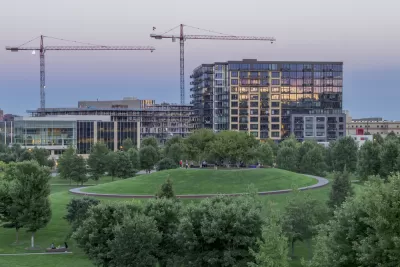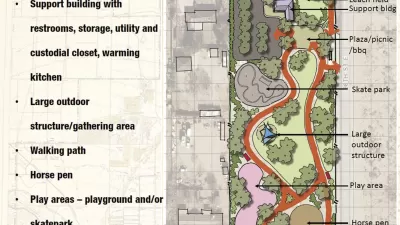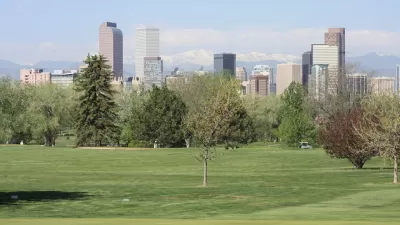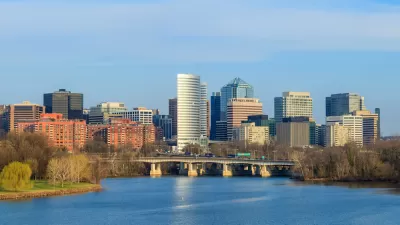Minneapolis wants more equity in its parks spending—and new plans are a key step in the process of delivering more equitable results.

"For the first time, the Minneapolis Parks and Recreation Board is writing comprehensive plans for every one of the city’s neighborhood parks, documents meant to guide development of the spaces for the next 20 to 30 years," reports Jessica Lee.
The comprehensive plans are necessitated by a change in parks budgeting established in 2016, when the city added an "Equity Matrix" to park funding decisions. The system was created "to reform a system that historically invested more money into the city’s more affluent, and whiter, neighborhoods," according to Lee.
"But with that new matrix in place, parks officials needed plans for how, exactly, to spend the money. That’s where the master plans for neighborhood parks come in," explains Lee.
The Minneapolis Parks and Recreation Board has been working on plans since 2016, along the way "[approving] long-range plans for neighborhood parks south of downtown and east of Interstate 35W [pdf], as well as those in the city’s urban core [pdf]. Then, in the spring of 2019, the board finalized the North Service Area Master Plan (which covers areas west of the Mississippi and north of Interstate 394) and the East of the River Park Master Plan (which pertains to northeast and southeast Minneapolis.)"
That's not even all the work that's underway at at various stages of the planning process, according to the article. Lee also updates the overall scope of the work and focuses on specific parks presenting more complex challenges as well.
FULL STORY: From pickleball to pollinators, people have a lot of thoughts about parks in southwest Minneapolis

Study: Maui’s Plan to Convert Vacation Rentals to Long-Term Housing Could Cause Nearly $1 Billion Economic Loss
The plan would reduce visitor accommodation by 25,% resulting in 1,900 jobs lost.

North Texas Transit Leaders Tout Benefits of TOD for Growing Region
At a summit focused on transit-oriented development, policymakers discussed how North Texas’ expanded light rail system can serve as a tool for economic growth.

Using Old Oil and Gas Wells for Green Energy Storage
Penn State researchers have found that repurposing abandoned oil and gas wells for geothermal-assisted compressed-air energy storage can boost efficiency, reduce environmental risks, and support clean energy and job transitions.

Santa Barbara Could Build Housing on County Land
County supervisors moved forward a proposal to build workforce housing on two county-owned parcels.

San Mateo Formally Opposes Freeway Project
The city council will send a letter to Caltrans urging the agency to reconsider a plan to expand the 101 through the city of San Mateo.

A Bronx Community Fights to Have its Voice Heard
After organizing and giving input for decades, the community around the Kingsbridge Armory might actually see it redeveloped — and they want to continue to have a say in how it goes.
Urban Design for Planners 1: Software Tools
This six-course series explores essential urban design concepts using open source software and equips planners with the tools they need to participate fully in the urban design process.
Planning for Universal Design
Learn the tools for implementing Universal Design in planning regulations.
Ascent Environmental
Borough of Carlisle
Institute for Housing and Urban Development Studies (IHS)
City of Grandview
Harvard GSD Executive Education
Toledo-Lucas County Plan Commissions
Salt Lake City
NYU Wagner Graduate School of Public Service





























